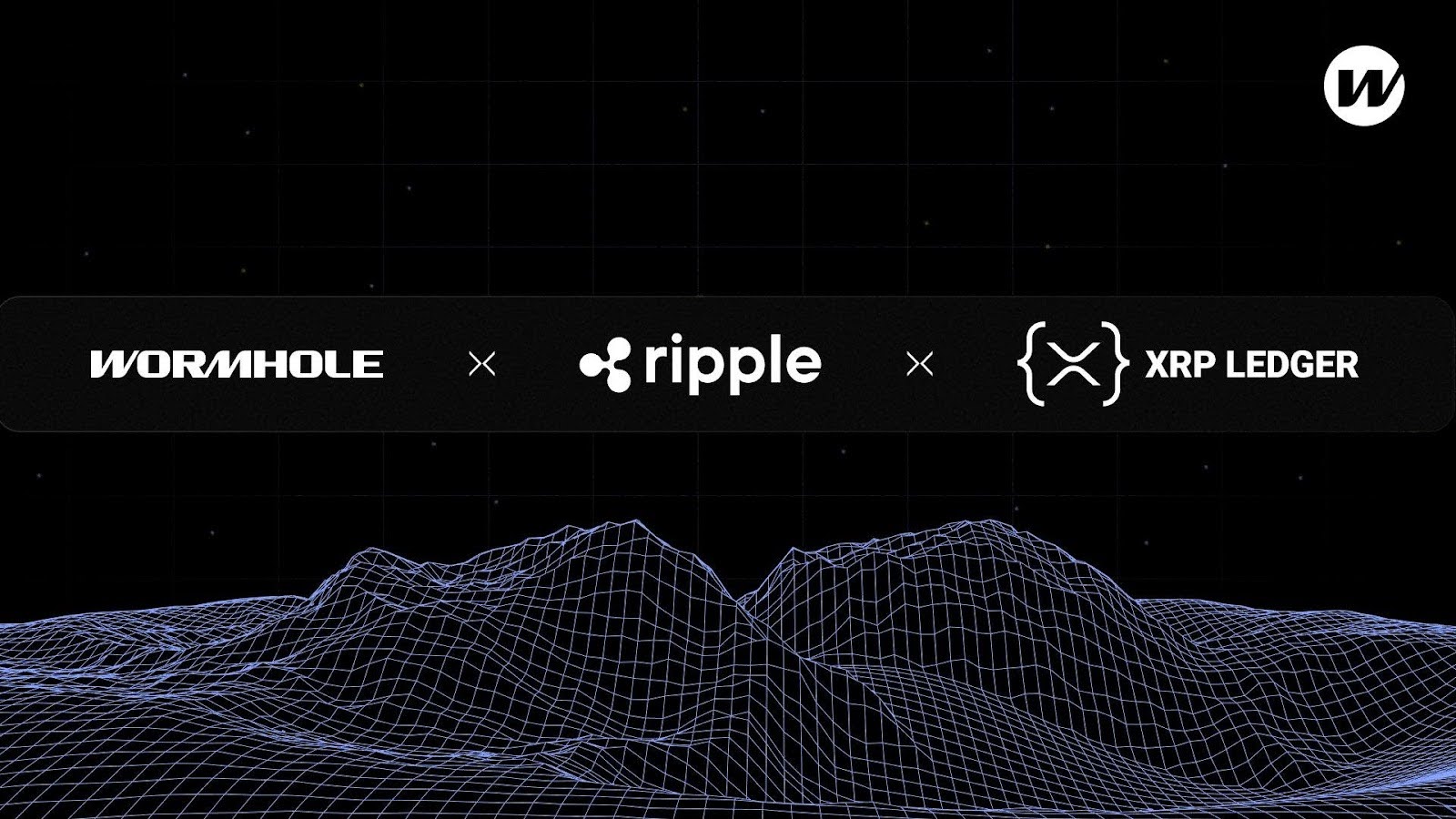Ripple’s Game-Changing Move: Wormhole Integration Unlocks $60B Cross-Chain Potential
Key Takeaways:
- Ripple integrates Wormhole to enable XRP Ledger (XRPL) and its EVM Sidechain to interact with 35+ blockchains.
- Developers can now move assets, trigger smart contracts, and issue multichain tokens across ecosystems.
- The move positions XRPL for major growth in DeFi, institutional finance, and tokenized real-world assets.
Ripple has made a brazen move to secure the position of the XRP Ledger in the multichain blockchain future. Wormhole, one of the most popular cross-chain interoperability protocols, will offer seamless movement of assets and data across over 35 blockchain networks, including Ethereum, Solana, Avalanche, and others via Ripple’s new Wormhole integration.

Ripple and Wormhole: Bridging Blockchain Silos
The XRP Ledger (XRPL), long known for its speed and enterprise-friendly design, is being retooled for the multichain era. Ripple’s integration with Wormhole brings institutional-grade interoperability to the core XRPL mainnet and its Ethereum-compatible EVM Sidechain. This means assets like XRP, issued IOUs, and Multi-Purpose Tokens (MPTs) will soon be able to move freely between chains, without giving up native issuance or control.
Read More: Ripple Co-Founder Resurfaces After 14 Years—What’s Behind the Silent Genius’ Emoji Post?
Wormhole isn’t a newcomer—it supports over 200 applications and has facilitated more than 1 billion cross-chain messages and over $60 billion in total value since launching in 2020. Adoption is already there with users like BlackRock, Securitize and Apollo. Making adoption not just technical, but strategic.
What This Means for Developers and Institutions
The aim of Ripple is simple: to advance XRPL as the most interoperable, composable and developer-friendly blockchain for payments and financial applications.
With Wormhole now integrated:
- Developers have the ability to launch dApps that communicate across various chains via messaging and data triggers.
- Assets such as XRP and issued tokens can securely move directly from one network to another across dozens of networks without suffering from liquidity fragmentation.
- Institutions can create and manage cross-chain compatible tokenized assets or stablecoins by default.
This significantly opens up the use cases for XRPL-based projects — from cross-chain DeFi and lending protocols to tokenized real estate, commodities, and digital identity systems.
XRPL’s Evolution: EVM Sidechain, Interoperability, and Real-World Utility
Ripple’s plan is broadening the scope of XRPL to simply having an improved core and to an EVM-compatible sidechain. Support for Solidity means developers using Ethereum tooling can now develop on XRPL while remaining compatible with smart contracts and infrastructure that already exists.
This sidechain approach enables:
- Ethereum-based DeFi apps can launch on XRPL EVM with few codebase changes.
- Bridging liquidity from other chains directly into XRPL-based protocols.
- Enterprise developers to create multichain applications that settle on XRPL but interact with assets and services elsewhere.
David Schwartz, Ripple CTO and co-creator of the XRPL, explained the vision clearly:
“If you want real mass adoption, interoperability is essential. The infrastructure has to be there, not just on one chain, but across them.”

Unlocking Multichain Use Cases for Payments, DeFi, and RWAs
The integration with Wormhole opens up additional use case possibilities that were previously restricted by blockchain silos:
Cross-Border Payments
When assets can flow easily over chains, XRPL is a hub for cross-border settlements. Institutions can leverage Ethereum or Solana-based assets to send settlements in XRP at near-instant speeds and minimal fees.
Decentralized Finance (DeFi)
Multichain DeFi platforms can accept deposits in USDC from Avalanche, execute a loan smart contract on XRPL EVM, and repay in native XRP—all through one seamless protocol.
Real-World Assets (RWAs)
Tokenized securities, real estate, and commodities can now be issued natively on XRPL and moved or mirrored across compliant blockchain ecosystems—critical for regulatory-sensitive environments.
Wormhole’s Role in the XRPL Stack
As the core interoperability protocol in the XRPL ecosystem, Wormhole will:
- Enable cross-chain transfers of XRPL-native assets
- Support smart contract interactions across 35+ supported chains
- Serve as a plug-and-play bridge for dApps, wallets, and financial institutions
- Bring developers access to cross-ecosystem liquidity
This plug-and-play model reduces complexity, cuts costs, and accelerates time-to-market for builders, regardless of which chain they originate from.
Why It Matters Now
In the blokchain world, interoperability is becoming a necessity. Over $2 billion worth of assets are bridged across chains monthly, according to Messari data — and it’s growing at a rapid pace. Fragmentation is still one of the main pain points for developers, users, and institutions alike.
Ripple’s approach addresses that directly. And by introducing this via the infrastructure layer, XRPL is an attractive proposition for projects looking to scale, to do so swiftly, without being limited by a single-chain ecosystem.
Read More: Ripple’s $125M Crypto Clash With SEC Paused Again — Massive XRP Shake-Up by August 15?
This is occurring while demand from institutions for tokenized assets is on the rise. Papers have been released by the IMF and BIS, advocating for a regulated model to tokenization. BlackRock’s new digital assets move is a reset for blockchain adoption at the enterprise level. With the help of Wormhole XRPL is now poised to tackle that demand head-on.
Ripple’s Vision for a Multichain Financial Internet
This is more than just a technical upgrade; it’s a long-term bet on how finance will change.
Robinson Burkey, Co-founder of Wormhole Foundation, commented:
“By integrating Wormhole into the XRP Ledger, we’re helping unlock even greater potential spanning all major blockchains for one of the most established blockchain networks in enterprise finance.”
Ripple’s continued support for open infrastructure and third-party protocols like Axelar and Wormhole sends a strong signal: the future of finance isn’t about one dominant chain—it’s about composability, interoperability, and freedom of choice.
The post Ripple’s Game-Changing Move: Wormhole Integration Unlocks $60B Cross-Chain Potential appeared first on CryptoNinjas.
CryptoNinjas



















